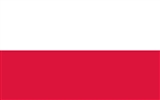
bordered by Germany
to the west; the Czech Republic
and Slovakia
to the south; Ukraine
, Belarus
and Lithuania
to the east; and the Baltic Sea
and Kaliningrad Oblast
, a Russia
n exclave
, to the north. The total area of Poland
is 312679 square kilometres (120,726 sq mi), making it the 69th largest country in the world and the 9th largest in Europe.
966 Christianisation of Poland
972 Battle of Cedynia, the first documented victory of Polish forces, takes place.
1025 Bolesław Chrobry is crowned in Gniezno, becoming the first King of Poland.
1227 Polish Prince Leszek I the White is assassinated at an assembly of Piast dukes at Gąsawa.
1241 Battle of Liegnitz: Mongol forces defeat the Polish and German armies.
1257 Kraków, Poland receives city rights.
1364 Jagiellonian University, the oldest university in Poland, is founded in Kraków, Poland.
1364 Jagiellonian University, the oldest university in Poland, is founded in Kraków, Poland.
1454 In the Battle of Chojnice, the Polish army is defeated by the Teutonic army during the Thirteen Years' War.
1569 Union of Lublin: the Kingdom of Poland and the Great Duchy of Lithuania confirm a real union; the united country is called the Polish-Lithuanian Commonwealth or the Republic of Both Nations.

